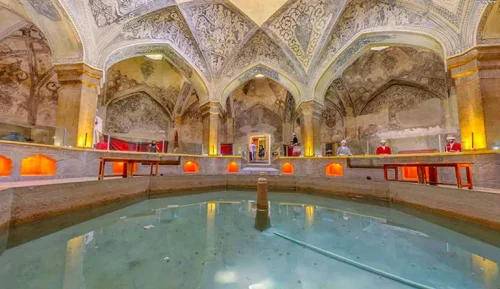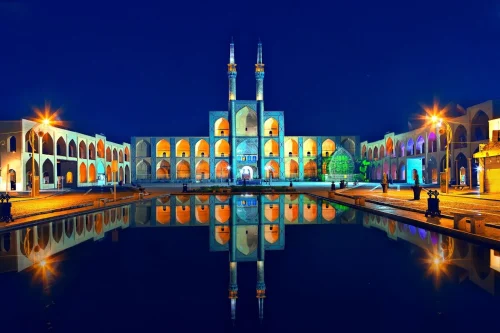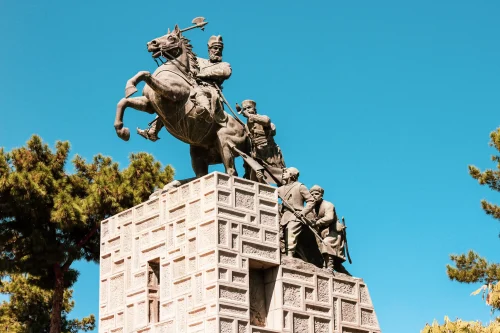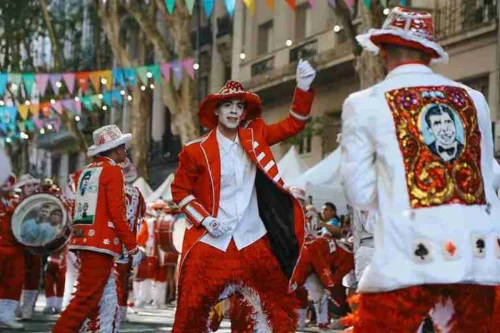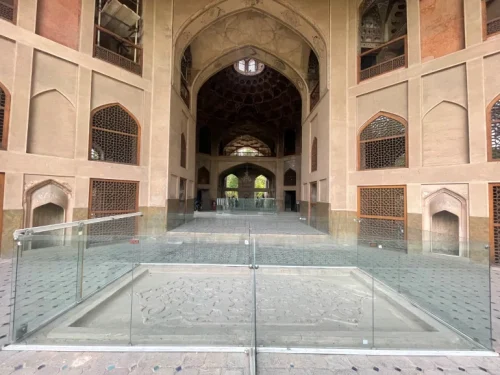Attractions of Croatia | Europe’s Cultural Treasures
Croatia, one of the most beautiful and historic countries in Europe, is known as an ideal destination for tourists worldwide with its stunning natural and cultural attractions. From the breathtaking beaches of the Adriatic Sea to historic cities like Dubrovnik and Split, every corner of this country tells a different story. Attractions of Croatia | Europe’s Cultural Treasures offers an unparalleled variety of attractions, from ancient sites to pristine national parks, appealing to all types of tourists. Dubrovnik, with its tall stone walls and Venetian architecture, is recognized as one of the most popular attractions in Croatia. Walking through the history of this city and visiting its best churches and palaces is an enchanting experience for every tourist. Additionally, Split with the Diocletian’s Palace, a masterpiece of ancient Roman architecture, is another remarkable attraction that combines history with modern life. Croatian islands such as Korcula and Hvar are known as paradises for seafood lovers and those seeking relaxation with their pristine nature and peaceful beaches. Attractions of Croatia | Europe’s Cultural Treasures continues to offer endless beauty in the Kornati National Parks, the wooden bridges of Plitvice Lakes, and the lush olive groves that impress every visitor. With its pleasant Mediterranean climate and warm hospitality from the locals, Croatia provides an unparalleled cultural and natural travel experience. Visiting this country can be an opportunity to learn about Europe’s rich history, enjoy beautiful natural landscapes, and experience dynamic local culture. It is recommended to plan carefully and use reliable services like Iran Charter to have a memorable and hassle-free trip to Croatia.
The Historic City of Dubrovnik in Croatia | Cultural Treasure of Europe
Dubrovnik, one of the most beautiful cities in Croatia, with its centennial walls and Venetian architecture, is recognized as a cultural treasure of Europe. This historic city, with its fortresses, churches, and cobblestone streets, takes visitors on a journey to the past. Places to Visit in Croatia | Cultural Treasures of Europe in Dubrovnik are not only historically valuable but also offer stunning views of the Adriatic Sea, providing an unparalleled experience for tourists.
Split: A Blend of History and Modern Life in Croatia
Split, the second-largest city in Croatia, is renowned as a historic and cultural center with the Diocletian Palace, one of the most significant Roman remnants in the world. This city uniquely offers both modern and historical attractions, Places to Visit in Croatia | Cultural Treasures of Europe. Walking through the alleys of Split and visiting museums and beautiful gardens provide a comprehensive experience of Croatia’s history and culture for tourists.
The Croatian Islands: Natural and Cultural Paradise in the Adriatic Sea
Croatian Islands, including Korčula and Hvar, with their pristine nature and tranquil beaches, are an integral part of Places to Visit in Croatia | Cultural Treasures of Europe. Each island, with its unique features, from historic architecture to beautiful nature, captivates tourists. Visiting these islands offers an opportunity to enjoy maritime peace and learn about the local Croatian culture.
Croatia’s National Parks: Unparalleled Beauty of Europe
Croatia’s national parks, such as Kornati and Plitvice, are among the Places to Visit in Croatia | Cultural Treasures of Europe that showcase pristine nature and stunning landscapes. These parks, with their lakes, waterfalls, and wooden bridges, are ideal spots for nature lovers and photographers. Walking through these areas offers an unforgettable experience of Croatia’s natural beauty.
Dubrovnik: A Historic Treasure in the Heart of Croatia
Dubrovnik, with its high walls and magnificent architecture, is considered one of the Places to Visit in Croatia | Cultural Treasures of Europe. This historic city, with its towers, squares, and numerous museums, showcases Croatia’s rich history. Visiting Dubrovnik is an opportunity to gain a deeper understanding of the culture and history of this beautiful country.
Croatian Olive Groves: The Mediterranean Essence in Croatia’s Destinations
Croatia’s lush olive groves are part of the Places to Visit in Croatia | Cultural Treasures of Europe, holding significance not just naturally but also culturally. Visiting these groves provides an opportunity to learn about the olive cultivation process and the production of natural olive oil. Additionally, tasting these fresh local products offers a delightful experience for tourists.
The Wooden Bridges of Plitvice: Nature’s Masterpiece in the Heart of Croatia
The wooden bridges of Plitvice, one of the Places to Visit in Croatia | Cultural Treasures of Europe, display the natural beauty of the Kornati National Park. These bridges, with their beautiful design and surrounding scenic spots, provide walking paths for tourists. Crossing these bridges offers the chance to see breathtaking views of lakes and waterfalls.
Diocletian’s Palace: A Historic Gem of Split in Croatia
Diocletian’s Palace in Split, one of the largest and most complete Roman buildings in the world, is recognized as one of the Places to Visit in Croatia | Cultural Treasures of Europe. With its magnificent architecture, this palace is not only a historical legacy but also a vibrant, dynamic place hosting tours, museums, and various cultural spaces. Visiting Diocletian’s Palace offers an opportunity to experience Croatia’s vibrant culture and living history.
Kornati: A Paradise for Divers and Nature Lovers in Croatia
Kornati National Park, one of the Places to Visit in Croatia | Cultural Treasures of Europe, with over 140 islands and underwater cliffs, is an ideal destination for divers and nature enthusiasts. The park’s clear waters and breathtaking sceneries offer a unique experience of Croatia’s natural beauty. Additionally, various facilities like boating and hiking attract tourists from around the world.
Korčula: Little Dubrovnik of Croatia | A Cultural and Natural Treasure
Korčula, known as “Little Dubrovnik”, is one of the Places to Visit in Croatia | Cultural Treasures of Europe, attracting tourists with its historic architecture and pristine nature. This island, with its cobblestone streets and historical buildings, such as the house of Marco Polo, symbolizes Croatia’s rich history and culture. Additionally, the calm beaches and clear waters of Korčula provide an ideal place for relaxation and enjoying the natural beauty.
FAQ
- Where is Croatia located and what are its geographical features?
- Croatia is located in the Balkans and South-Central Europe. It borders Slovenia and Hungary to the north, Serbia to the northeast, Bosnia and Herzegovina to the east, and Montenegro to the south. Croatia offers diverse attractions with its combination of mountainous nature, Adriatic coasts, and historic cities.
- What are the top tourist attractions in Dubrovnik?
- Dubrovnik, with its high stone walls, cobbled streets, and magnificent palaces, is one of Croatia’s top tourist attractions. The Dubrovnik Cathedral and Sponza Palace are also considered must-visits in this city.
- What is the significance of Diocletian’s Palace in Split?
- Diocletian’s Palace is one of the world’s largest and most complete Roman buildings, forming the heart of Split city. Built in the 4th century AD, it is recognized as a UNESCO World Heritage site and served as the residence of Roman Emperor Diocletian.
- What attractions does Pula, Croatia have?
- Pula is known for its magnificent Roman amphitheater. Other attractions include the Arch of the Sergii and Pula Castle, drawing visitors to this region’s rich history.
- What features does the Kornati National Park offer?
- The Kornati National Park, with over 140 islands and underwater cliffs, is one of Croatia’s most beautiful and untouched natural areas. Its clear waters, pristine beaches, and hidden caves are prime attractions.
- What is the importance of the wooden bridges in Plitvice National Park?
- The wooden bridges in Plitvice National Park are known as nature’s masterpiece. Built over the park’s lakes and waterfalls, they allow tourists to access various parts of the park, showcasing stunning views of untouched nature.
- What tourist attractions does Korčula offer?
- Korčula, with its medieval architecture, sandy beaches, and clear Adriatic waters, is known as a paradise for seafood lovers. The house of Marco Polo is another attraction where visitors can learn about its history.
- Why is Zadar a popular destination and what features does it have?
- Zadar combines historical and natural elements, offering a unique travel experience. The Sea Organ and Sun Salutation are standout attractions that captivate every visitor.
- What activities are available in Plitvice National Park?
- In Plitvice National Park, visitors can enjoy hiking, mountains climbing, diving, and boating in clear waters. Viewing high waterfalls and discovering natural caves are other popular activities in the park.
- How do Croatian olive groves serve tourists?
- Visiting Croatia’s lush olive groves offers tranquility and insight into the olive oil production process. Tourists can participate in oil extraction workshops and learn about traditional olive farming.
- When is the best time to visit Croatia?
- The best times to visit Croatia are during the spring and fall, when the weather is milder and tourism is less intense than in the summer season. These seasons offer optimal conditions to enjoy natural beauty while avoiding crowded tourist destinations.
- Which Croatian islands are ideal for relaxation and rest?
- The islands of Molat and Plitvice in Croatia, with their untouched nature, quiet beaches, and clear waters, are ideal for relaxation and rest. These islands provide a great escape from city crowds and offer enjoyment of nature.
- What historical features does the Dubrovnik Cathedral have?
- Dubrovnik Cathedral, with its Gothic and Romanesque architecture, is one of Croatia’s most significant religious buildings. Built in the 12th century, it attracts many tourists annually with its exquisite interiors and valuable artworks.
- What recreational facilities are available on Korčula Island?
- Korčula Island in Kornati National Park offers diverse recreational activities, including boating, diving, walking on designated paths, and exploring natural caves. The untouched beaches and clear waters make it a popular destination for nature enthusiasts.
- How can one best visit the Croatian islands?
- To visit the Croatian islands, the best method is to use tourist boats and cruises. Renting a personal boat or joining boat tours can also provide a unique island experience.
- What are the historical attractions of Split?
- Split, with Diocletian’s Palace, one of the world’s largest Roman buildings, is a primary historical attraction of this city. Additionally, the Archaeological Museum of Split and Bacvice Beach are other attractions tourists can visit.
- What facilities does Dubrovnik offer for history enthusiasts?
- Dubrovnik, with its historical walls, medieval palaces, and old churches, is recognized as a center for history enthusiasts. Additionally, watching historical performances and visiting local museums are available for history lovers.
- What seafood is popular in Croatia?
- In Croatia, seafood dishes like paprikaš, burańa, shrimp goulash, and fresh fish are among the most popular. Coastal cities like Dubrovnik and Split are the best places to taste these dishes.
- Are there family-friendly recreational places in Croatia?
- Yes, Croatia has various recreational places suitable for families. National parks such as Plitvice and Kornati offer walking paths suitable for children and adults, calm beaches, and urban entertainment centers like Dubrovnik and Split provide good options for family fun.
- Where are the best hotels in Croatia located?
- The best hotels in Croatia are generally located in the country’s major tourist cities like Dubrovnik, Split, Zadar, and Pula. These hotels offer luxurious amenities, ideal locations, and top-notch services for travelers.
- What cultural activities are available in Croatia?
- In Croatia, various cultural activities are available, including visiting museums and art galleries, participating in music and art festivals, watching theater performances, and joining historical tours to learn about the country’s cultural heritage.
- What safety standards exist in Croatia’s tourist attractions?
- Croatia’s tourist attractions adhere to international safety and hygiene standards, providing a safe environment for visitors. These standards include cleanliness maintenance, guide signs, security oversight, and providing accurate information to tourists.
- How can one benefit from tourist services in Croatia?
- To benefit from tourism services in Croatia, you can book various tours through reliable websites (such as Irancharter.ir), local travel agencies, or online. These tours include visits to main attractions, transportation, local guidance, and facilities for travelers. For more information, you can call 02191091190 or email info@irancharter.ir.
- Is Croatia suitable for water sports?
- Yes, Croatia, with its clear Adriatic waters, beautiful beaches, and suitable amenities for water sports like diving, boating, jet skiing, and surfing, is an excellent destination for sports enthusiasts.


